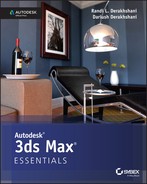Chapter 12
Character Studio: Animation
Character animation is a broad and complex field; in fact, the character-animation computer-generated specialty is one of the toughest specialties to master. To use one word, good character animation comes down to nuance. When you animate a character, you have to have a keen eye for detail and an understanding of how proportions move on a person’s body. Setting up a computer-generated character to walk exactly like a human being is amazingly complicated.
Character systems such as Character Studio make it a breeze to outfit characters with biped setups and have them moving in a walk cycle very quickly.
This chapter introduces you to the basics of using Character Studio and bones for animation. Further investigation into these tools is a must if you want your animation to be full of life and character.
In this chapter, you’ll learn to:
- Animate the alien
- Use freeform animation
- Modify animating using the Dope Sheet
Animating the Alien
Bipeds can be animated in several ways, including footstep-driven animation and freeform animation. With footstep-driven animation, you add visible Footstep objects to your scene and direct the biped to step onto those footsteps at particular points in time. Footsteps can be added individually or as a set of walk, run, or jump steps; they can be moved or rotated to achieve the desired result and direction. When you use footstep-driven animation, the legs and feet of the biped are not the only things animated; the hips, arms, tails, and all other components are animated as well. However, this approach is rarely the complete solution to your animation needs.
Freeform animation means that you animate the components of the biped manually, as you would animate any other object, such as a bouncing ball.
Animation keys that are added to the selected Biped objects appear in the track bar, just like other objects, where they can be moved, modified, or deleted to adjust the animation.
Exercise 12.1: Adding a Run-and-Jump Sequence
At the end of the previous chapter, you finished rigging the alien model and added footsteps to check the model. New footsteps can be appended to any existing footsteps. In the next exercise, you will add footsteps to the existing animation cycle.
Open the c12_ex1_run_start.max file in the scenes folder of the c12_CharacterAnimation project on the book’s web page at www.sybex.com/go/3dsmax2015essentials. This file has most of the biped bones hidden. The objects that are visible in the file are the alien model; Bip001 is the diamond shape that sits at the pelvis area of the alien character and acts as the center for your biped rig,
- Select the Bip001 object in the Select From Scene dialog box, and click OK.
- On the Motion panel, choose Footstep mode (
 ).
). - Click the Run icon (
 ) in the Footstep Creation rollout. This will apply a run gait to any footsteps you add to your current footsteps using the Create Multiple Footsteps dialog box.
) in the Footstep Creation rollout. This will apply a run gait to any footsteps you add to your current footsteps using the Create Multiple Footsteps dialog box. - Click the Create Multiple Footsteps icon (
 ) to open the Create Multiple Footsteps dialog box.
) to open the Create Multiple Footsteps dialog box. - Change Number of Footsteps to 10 and click OK.
- In the Footstep Operations rollout, click the Create Keys for Inactive Footsteps icon (
 ) to associate the new footsteps with the biped.
) to associate the new footsteps with the biped. - Click the Play Animation button. In this file the In Place Mode icon (
 ) is active. The biped will appear to stay in place while the scene moves around it. The biped walks through the first 8 steps and then runs through the next 10. Click the Stop Animation button to turn off the animation.
) is active. The biped will appear to stay in place while the scene moves around it. The biped walks through the first 8 steps and then runs through the next 10. Click the Stop Animation button to turn off the animation.
- Click the Jump button in the Footstep Creation rollout, and then click the Create Multiple Footsteps button.
- In the Create Multiple Footsteps dialog box, set the number of footsteps to 4 and click OK.
- Click the Create Keys for Inactive Footsteps icon to associate the new jump footsteps with the biped.
- Click the Play Animation button. The biped will walk, run, and then end the sequence with two jumps, as shown in Figure 12-1.
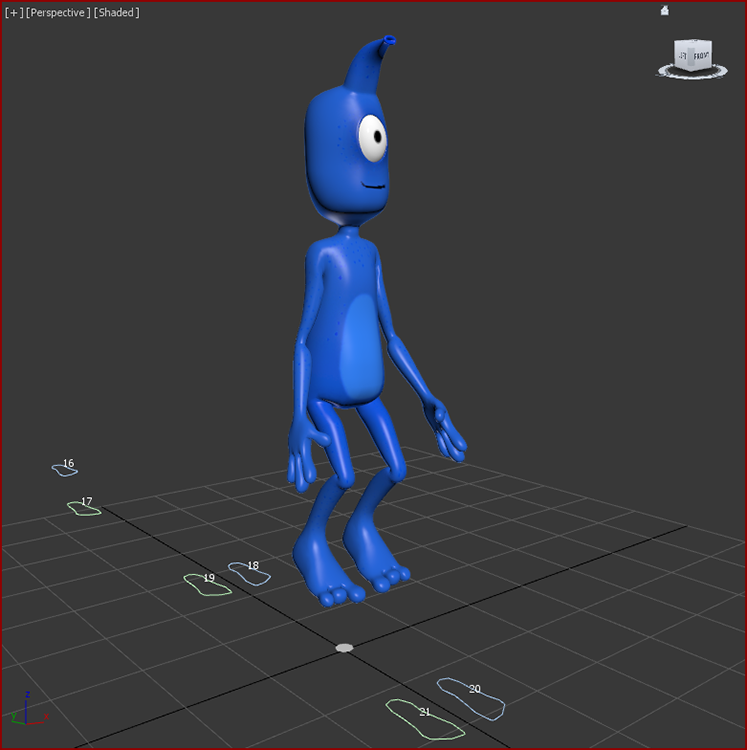
Figure 12-1: Alien model with the jump sequence added
Save your work before continuing with the next set of steps. To check your work open c12_ex1_run_end.max from the scenes folder of the c12_CharacterAnimation project folder.
Freeform Animation
When you set your keys initially, you will need to edit them to suit good timing and form. When one part of the body is in one movement, another part of the body is in an accompanying or supportive or even opposite form of movement. When you are walking and your right leg swings forward in a step, your right arm swings back and your left arm swings forward to compensate.
You can easily add or modify the biped’s existing animation keys with freeform animation using the Auto Key button and the Dope Sheet. The following exercises contain examples of freeform animation.
Exercise 12.2: Moving the Head
The following steps will guide you through the process of creating head movement for your biped. Continue with the previous alien model or open the c12_ex2_head_start.max file in the scenes folder of the c12_CharacterAnimation project on the book’s web page. Because you will be working with the biped a lot in this exercise, the biped components have been unhidden and the alien model has been hidden. If you are using your own file you need to do the same.
- Select any Biped object, and if necessary, exit Footstep mode by clicking the Footstep Mode icon.
- Drag the time slider to frame 50, approximately the point when the biped lifts its left foot off footstep number 2.
- Select the biped’s head and note the animation keys that appear in the track bar, as shown in Figure 12-2.
- In the track bar, select the two keys on either side of the current frame. You can do that using either of the following methods:
- Drag a selection box around both keys directly on the track bar.
- Select one key, and then holding the Ctrl key, select the other key.
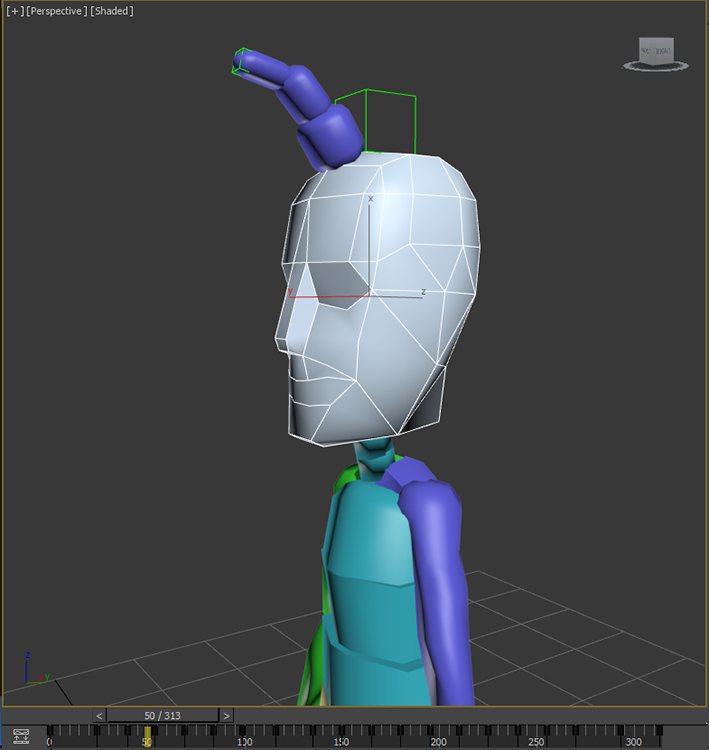
Figure 12-2: Selecting the head of the biped reveals all of that object’s animation keys in the track bar.
- Once the two keys are selected, right-click over either keyframe and then choose Delete Selected Keys, as shown in Figure 12-3.
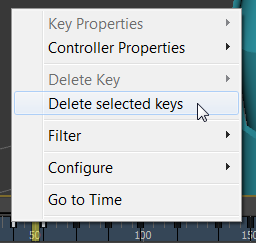
Figure 12-3: Delete the keys on either side of frame 50.
- Click the Auto Key button or press the N key to turn it on. This will allow you to begin creating the animation.
- Click the Rotate tool and rotate the head, to the left and up, as shown in Figure 12-4, as if the character sees somebody in a second-floor window off-screen. A new key will be created at frame 50, recording the time and value of the head’s rotation.
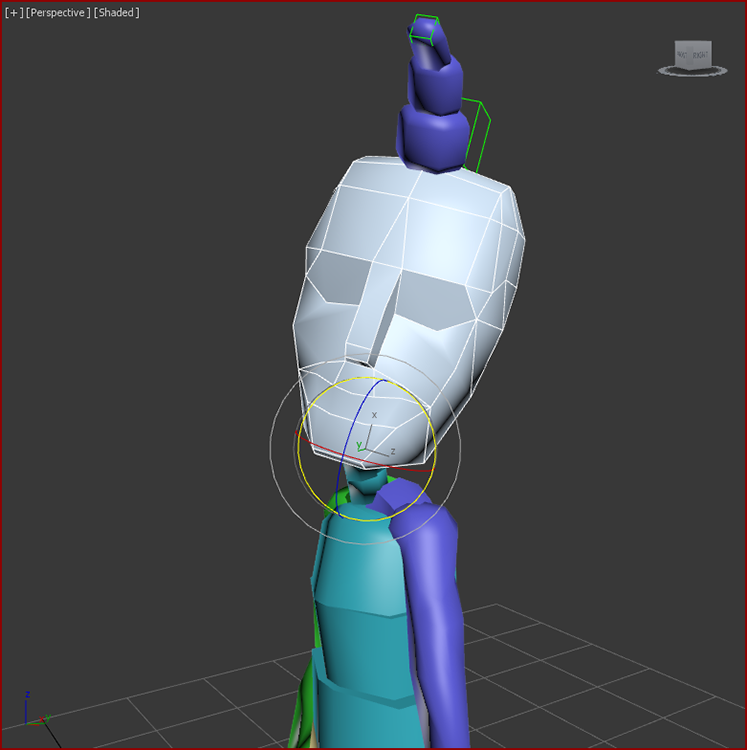
Figure 12-4: Rotate the head to the left and up.
- Scrub through the time slider by moving it back and forth, watching the head rotate from a neutral position to the orientation that you created and then back to the neutral position.
- Select all the keys between frame 50 and frame 100 (but not the keys at frames 50 and 100), and delete them. Doing so will make room for the new key that you are about to create.
- Select the key at frame 50, hold down the Shift key, and drag a copy of the key to frame 90, as shown in Figure 12-5. Use the readout at the bottom of the window to drag the key with precision. Copying the key will cause your biped to hold that neck pose for 40 frames, or about 1 1/3 seconds.

Figure 12-5: Drag to copy the key.
- Scrub the time slider to review the animation.
Save your work before continuing with the next set of steps. To check your work open c12_ex2_head_end.max from the scenes folder of the c12_CharacterAnimation project folder.
Exercise 12.3: Moving the Arms
Continue with the previous alien model or open the c12_ex3_arm_start.max file in the scenes folder of the c12_CharacterAnimation project folder.
- Select the biped’s left upper arm.
- In the track bar, select and delete the key frames between frames 50 and 100. If you scrub the time slider or play the animation, the biped will hold its arm unnaturally stiff for 60 frames because you deleted the animation keys between two points where it moves its hand forward.
- Move the time slider to frame 60. This is the location for the first new animation key. Now it’s time to animate the arms, which are essential components in any walk cycle.
- 4. Turn on Auto Key (N) and then rotate the upper arm upward, so that it points to the location at which the head is looking.
- Continue adjusting the biped’s left arm, hand, and finger until they appear to be pointing at something, as shown in Figure 12-6.
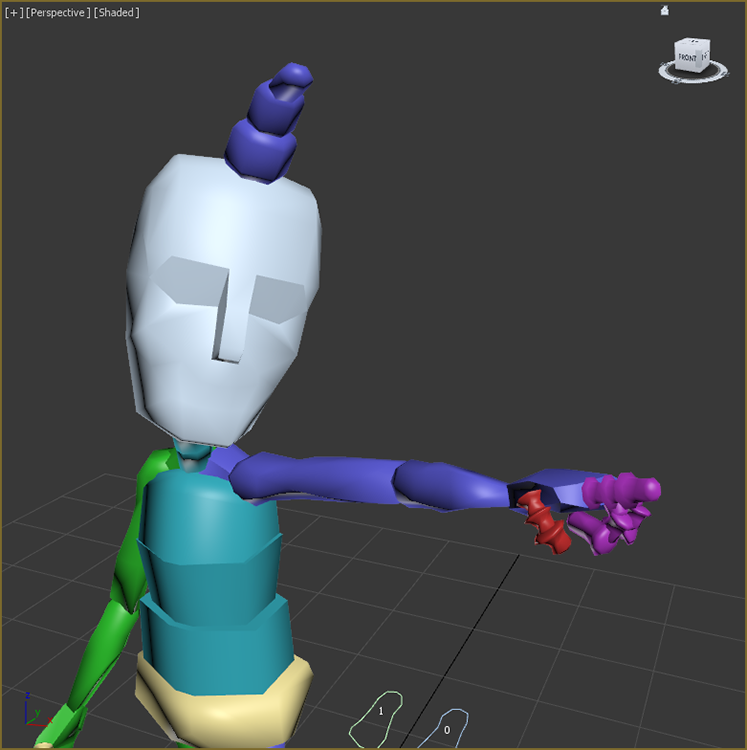
Figure 12-6: Rotate the biped’s arm, hand, and finger to assume a pointing posture.
- Double-click the left upper arm to select it and all of the components below it in the hierarchy.
- In the track bar, select the key at frame 60, hold down the Shift key, and drag it to frame 90 to create a copy.
- Drag the time slider and watch the Perspective viewport. The biped will walk for a bit, notice something off-screen, point at it, and drop its arm while looking forward again before breaking into a run and then a jump.
- Click the Auto Key button to turn it off.
Save your work before continuing with the next set of steps. To check your work open c12_ex3_arm_end.max from the scenes folder of the c12_CharacterAnimation project folder.
Exercise 12.4: Completing the Motion Sequence
Continue with the previous alien model or open the c12_ex4_motion_start.max file in the scenes folder of the c12_CharacterAnimation project folder.
For additional practice, add keys to the animation of the biped’s arms when it jogs through the run cycle. For example, when the left foot is fully extended and the heel plants on the ground, the right arm should be bent at the elbow and swung forward and slightly in front of the biped’s body. As the right foot swings forward during the next step, the right arm should swing backward and assume a nearly straight position. Bend each of the spine links and swing both arms backward to prepare the biped for each of the jumps. Use the Body Vertical button in the Track Selection rollout to lower the pelvis into a prelaunch position, as shown in Figure 12-7, before the biped launches into its upward motion.
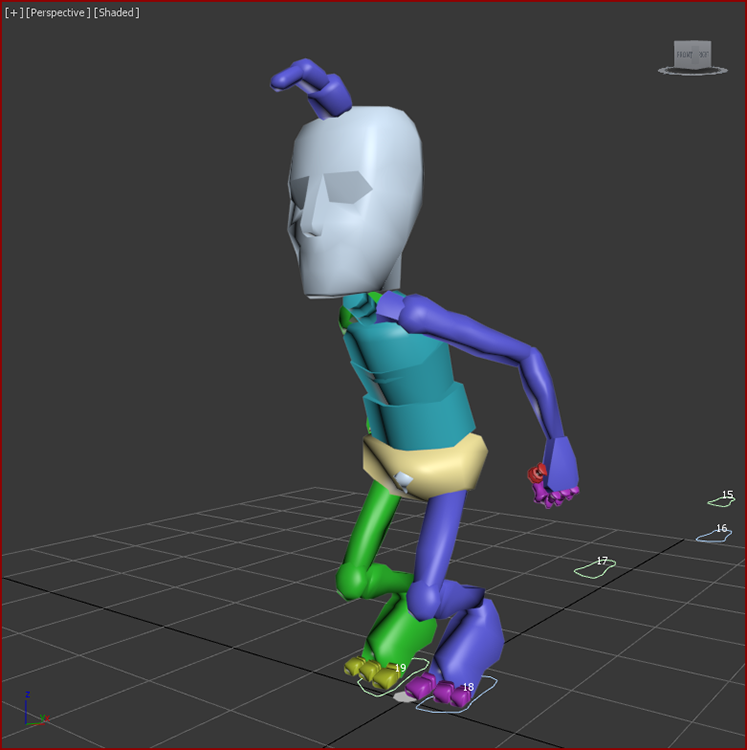
Figure 12-7: Use the Body Vertical button to position the biped for a jump.
Save your work before continuing with the next set of steps. To check your work open c12_ex4_motion_end.max from the scenes folder of the c12_CharacterAnimation project folder.
Modifying Animation in the Dope Sheet
To change the animation that is generated with Character Studio, you will edit the keyframes of the biped once you are happy with the base animation cycle. For this, you need to use the Track View–Dope Sheet. The Track View–Curve Editor, as you have already seen in Chapter 5, “Introduction to Animation,” is used to edit the function curves between animation keys; however, the Track View–Dope Sheet interface is cleaner and is used to edit the specific value and position of the keys. It is not a different set of keyframes or animation; it’s just a different way of editing them.
In the next exercise, you will add individual footsteps and modify the footstep timing in the Dope Sheet to make the biped dance and jump.
Exercise 12.5: Adding Footsteps Manually
For this exercise you will need a file with no animation applied, so start with the c12_ex5_steps_start.max file in the scenes folder of the c12_CharacterAnimation project folder. This is the rigged and skinned alien biped with no footsteps applied.
- Select a biped component and enter Footstep mode.
- In the Footstep Creation rollout, click the Walk button and then the Create Footsteps (At Current Frame) icon (
 ).
). - In the Top viewport, click in several locations around the biped to place alternating left and right footsteps to your liking.
- Change the gait to Jump, and then click the Create Footsteps (Append) icon to create additional footsteps. Create about 12 footsteps in all.
- When you have finished, use the Move and Rotate transforms to adjust the footstep locations and orientations as desired. Your Top viewport should look similar to Figure 12-8.

Figure 12-8: Manually place the footsteps in the Top viewport.
- In the Footstep Operations rollout, click the Create Keys for Inactive Footsteps icon and then play the animation.
Character Studio doesn’t have a collision-detection feature, so it is very possible that limbs will pass through one another, which would be quite uncomfortable in real life. If this happens, the footsteps must be modified to eliminate these conditions. If necessary, move any footsteps that cause collisions or other unwanted conditions during the playback. Save your work before continuing with the next set of steps. To check your work open c12_ex4_steps_end.max from the scenes folder of the c12_CharacterAnimation project folder.
Exercise 10.6: Using the Dope Sheet
In Chapter 5, you experimented with the Track View–Curve Editor and learned how to adjust the values of animation keyframes. When the Track View is in Dope Sheet mode, frames are displayed as individual blocks of time that may or may not contain keys. Although you cannot see the flow from key to key that the Curve Editor displays with its curves, the Dope Sheet mode has its advantages. For one, the Dope Sheet has the ability to add Visibility tracks to control the display of an object, as well as Note tracks for adding text information regarding the keys as reminders.
Using the Track View–Dope Sheet, you can adjust the point in time when a foot plants on or lifts off the ground, how long the foot is on the ground, and how long the foot is airborne. Rather than appearing as single-frame blocks in the Dope Sheet as other keys do, footstep keys appear as multiframe rectangles that identify each foot’s impact time with the footstep. Continue with the previous alien model or open the c12_ex6_dope_start.max file in the scenes folder of the c12_CharacterAnimation project folder.
- Make sure you are in Footstep mode. This will select the biped’s footsteps.
- In the main toolbar, choose Graph Editors ⇒ Track View–Dope Sheet. The Dope Sheet will open.
- In the Navigation pane on the left, scroll down until you find the Bip001 Footsteps entry, and expand it.
- If necessary, click the Zoom Region icon (
 ) in the lower-right corner of the Dope Sheet window and drag a zoom window around the footstep keys, as shown in Figure 12-9. The region will expand to fit the Key pane. Right-click to exit the Zoom Region tool.
) in the lower-right corner of the Dope Sheet window and drag a zoom window around the footstep keys, as shown in Figure 12-9. The region will expand to fit the Key pane. Right-click to exit the Zoom Region tool.
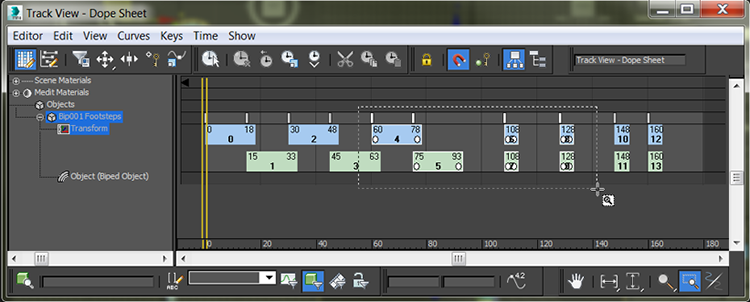
Figure 12-9: Zoom to the footstep keys.
- Select a few footsteps in the viewport or select the green- and blue-colored rectangles (holding Ctrl to select multiple footsteps). The white dot on the left side of a selected key identifies the frame when the heel of the biped’s foot first impacts the footstep. The white dot on the right side of a selected key, as shown in Figure 12-10, identifies when the biped’s foot lifts off a footstep. A blue key (rectangle) overlapping a green key (rectangle) indicates that both feet are on the ground. A vertical gray area with no footstep indicates that the biped is airborne and neither foot is on the ground.
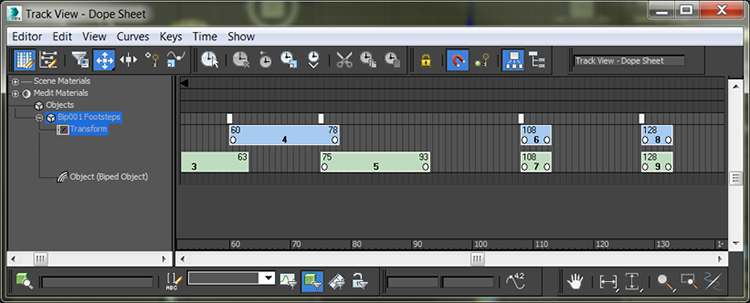
Figure 12-10: The dots indicate when contact begins and ends. You can drag a dot to change the duration of contact.
- Select the first key (numbered 0), place the cursor over the right edge of the key, and then drag the dot to the right to extend the length of time the biped’s foot is on the ground.
- Drag the Dope Sheet’s time slider to a point in time when the biped is airborne. Increasing the airborne time by increasing the gap between footsteps will also boost the height to which the biped rises, acting against the gravitational force pushing it downward.
- Select the last four jump keys and drag them to the right to create a gap approximately 40 frames wide, as shown in Figure 12-11. Doing so will cause the biped to be airborne for about one second.

Figure 12-11: Create a key gap to get your biped airborne.
- Move the time slider to the frame when both feet are planted before the jump starts, and turns on Auto Key mode.
- Deselect any keys by clicking a blank area in the Key pane.
- Prepare the biped to leap as follows:
- Select the Bip001 object and move it downward, causing the biped to bend its knees more.
- Be sure to choose Local as the reference coordinate system for the Rotate transform.
- Rotate the spine links, neck, and head to bend the torso forward and tuck the chin.
- Rotate both arms backward into a pre-jump posture, as shown in Figure 12-12.

Figure 12-12: Prepare your biped to jump.
- Move the time slider forward until the biped is at the apex of the jump.
- Rotate the biped’s components into positions you like, such as the split shown in Figure 12-13.
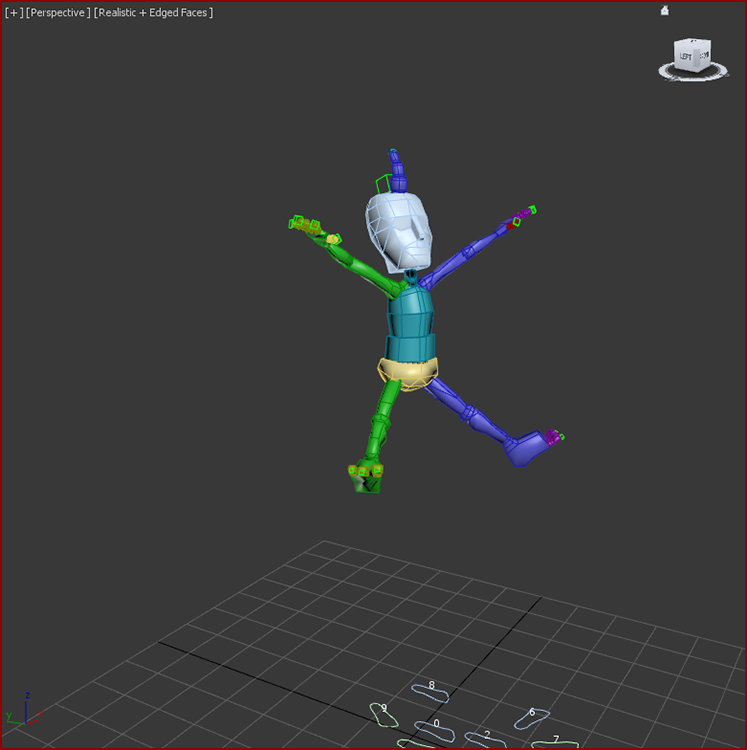
Figure 12-13: Position your biped in mid-jump.
- Delete any animation keys that may interfere with your desired motion, and turn off Auto Key.
The
c12_ex6_dope_end.maxfile in thescenesfolder of thec12_CharacterAnimationproject folder contains the completed exercise so you can check your work. This file has the alien model unhidden and the biped hidden. - Play the animation and see how it looks; modify where needed.
As you saw, there are several ways to animate a biped, including the footstep-driven method, the freeform method, and a combination of techniques. You can also modify the animation in the track bar, with the Auto Key button, and with Track View–Dope Sheet.
